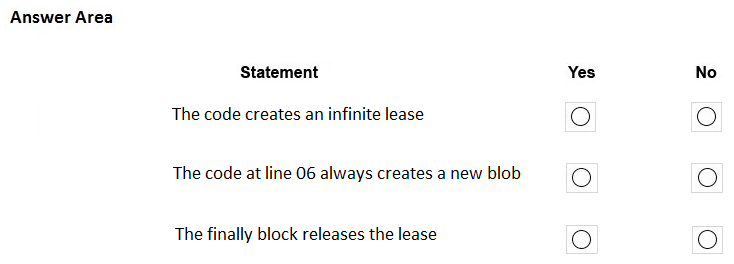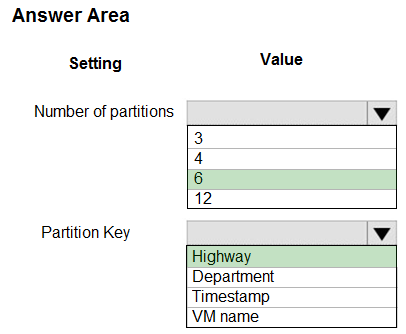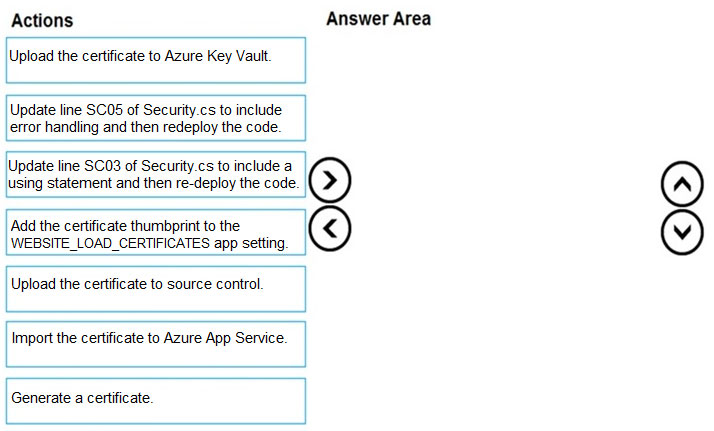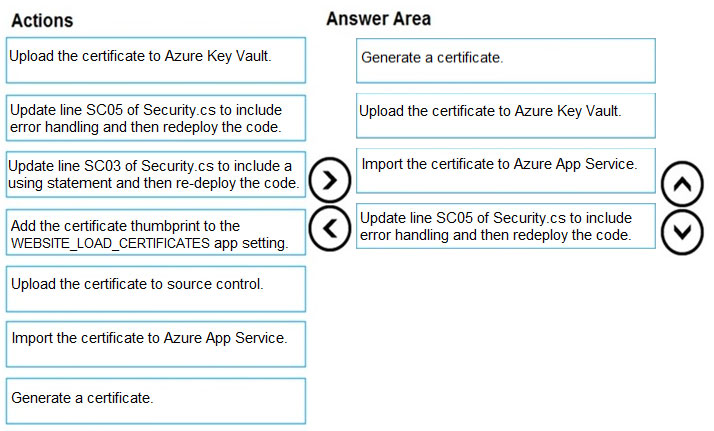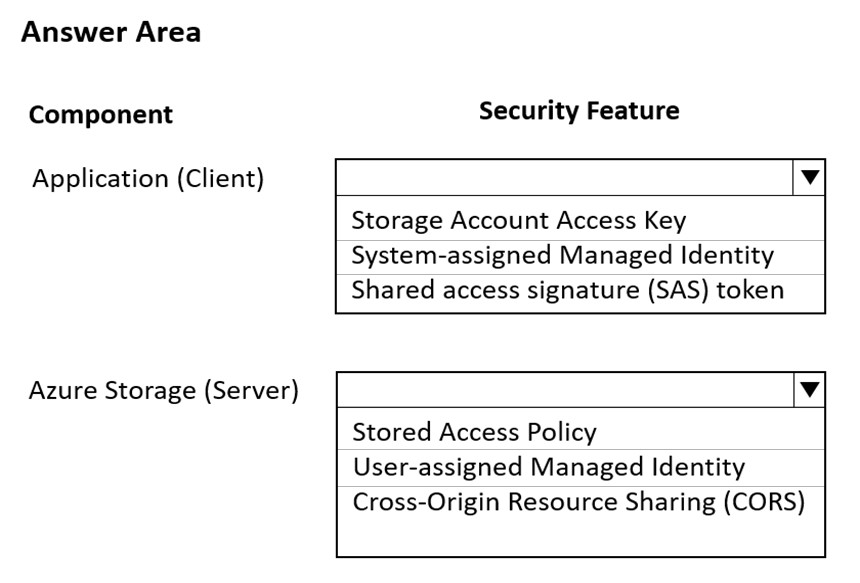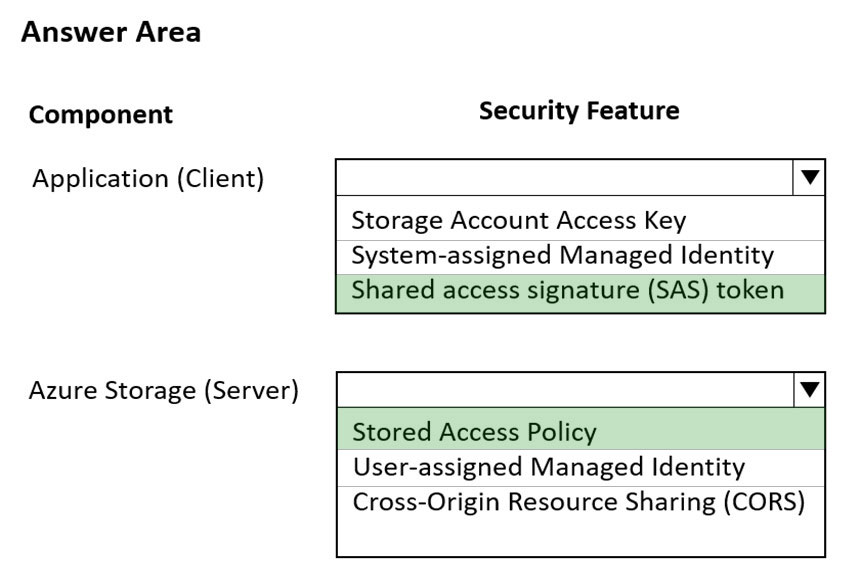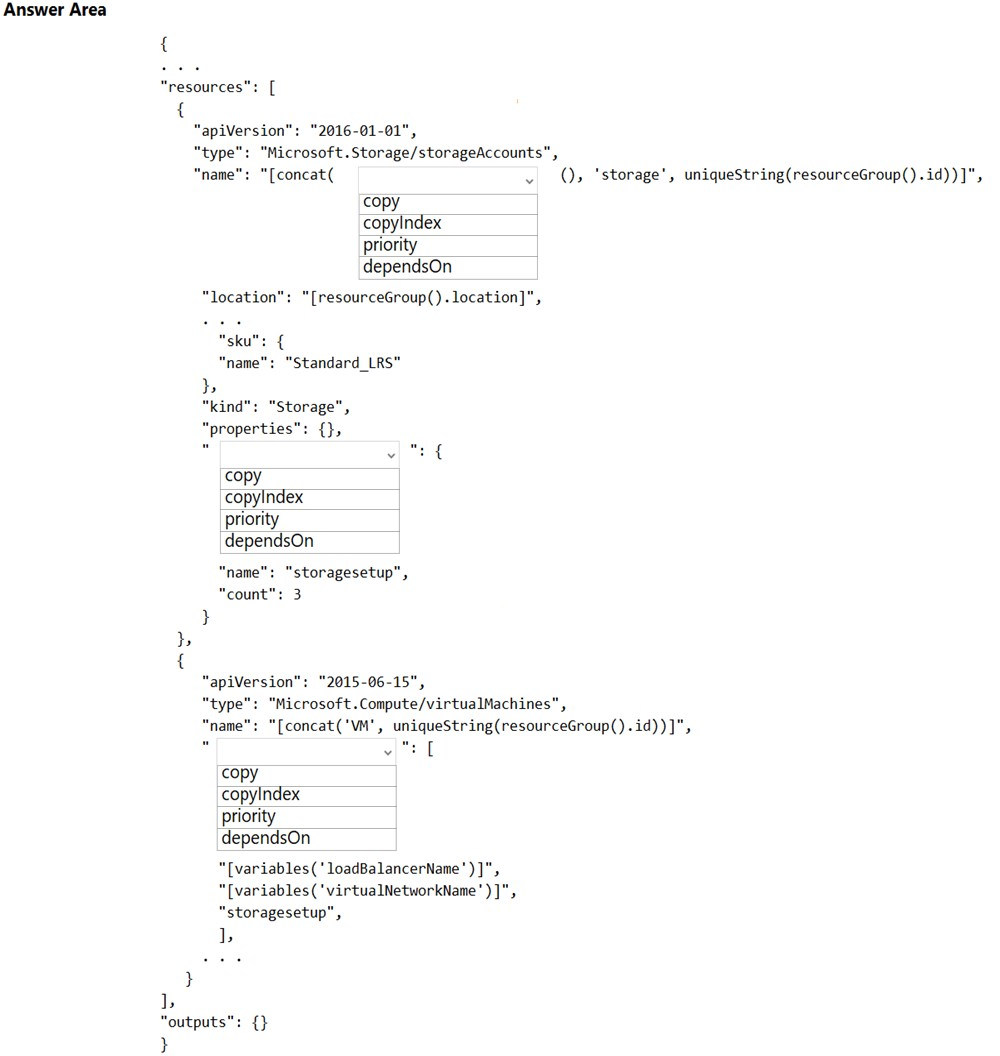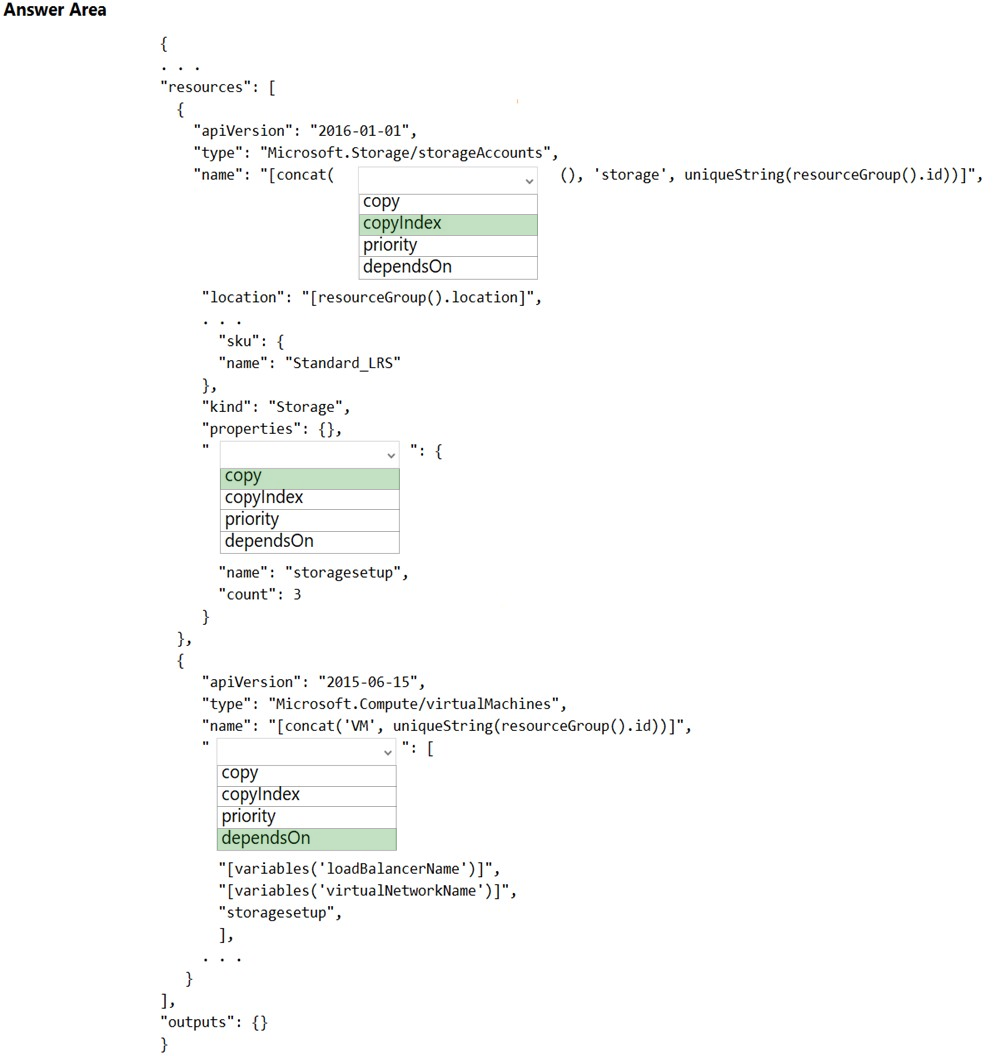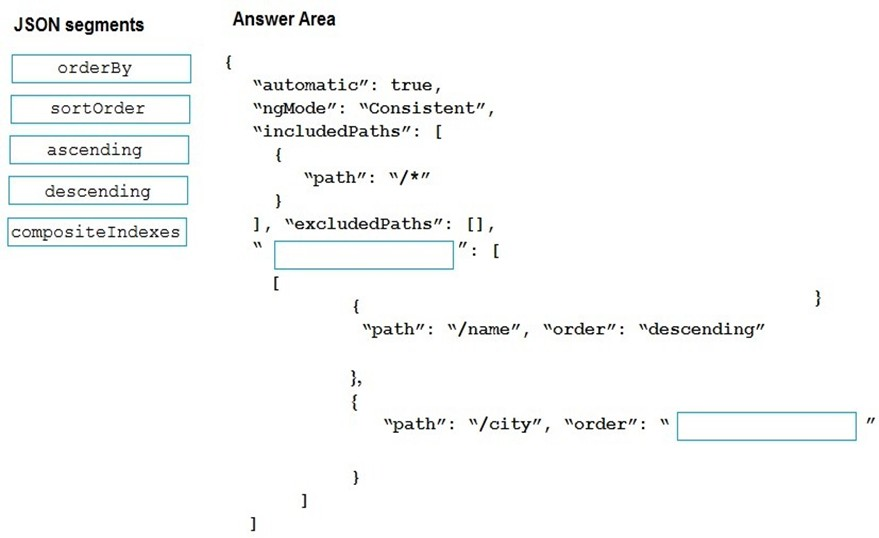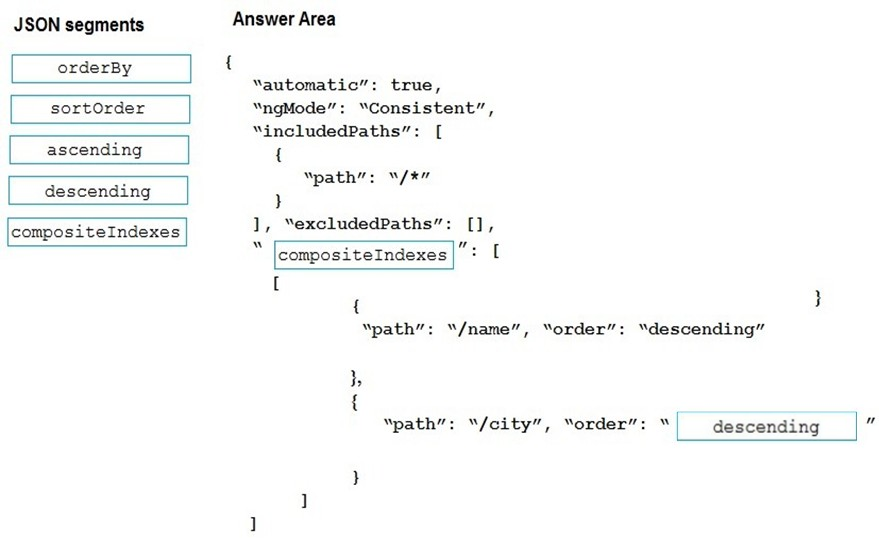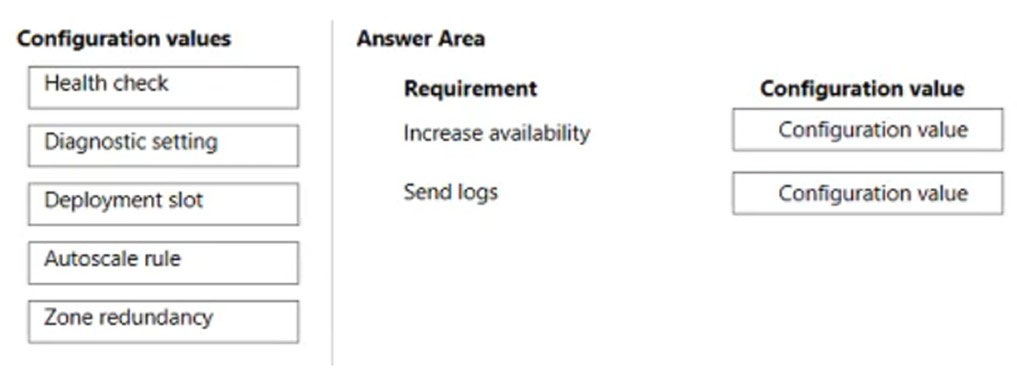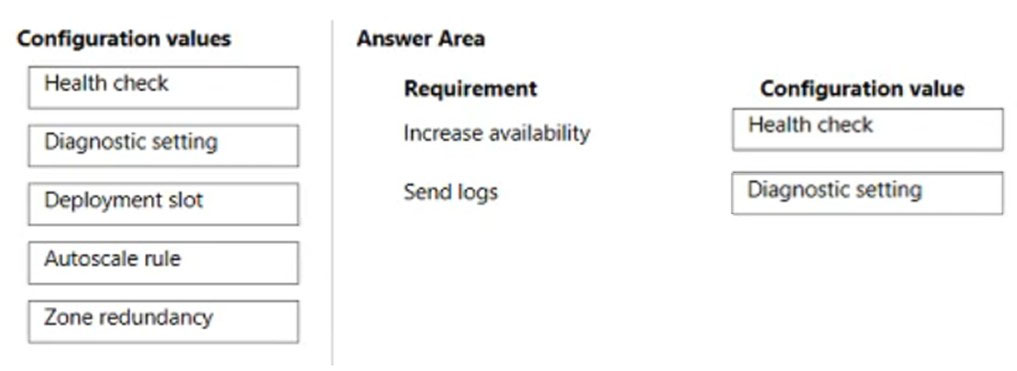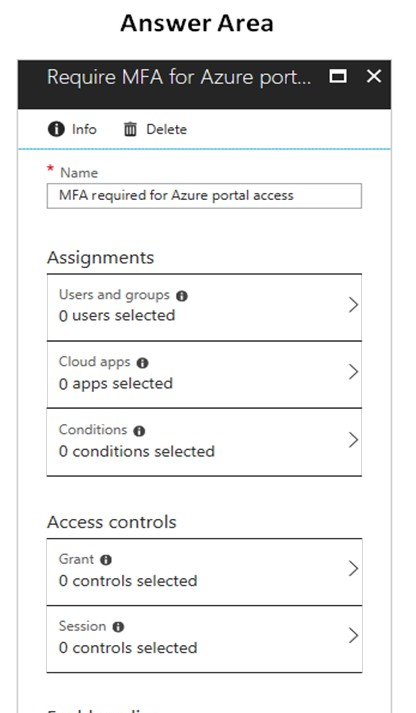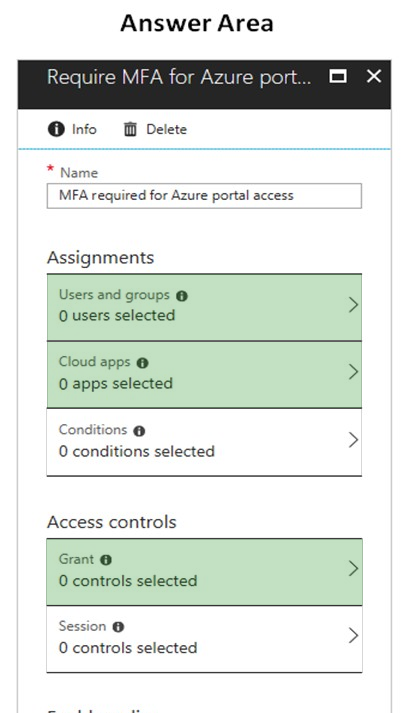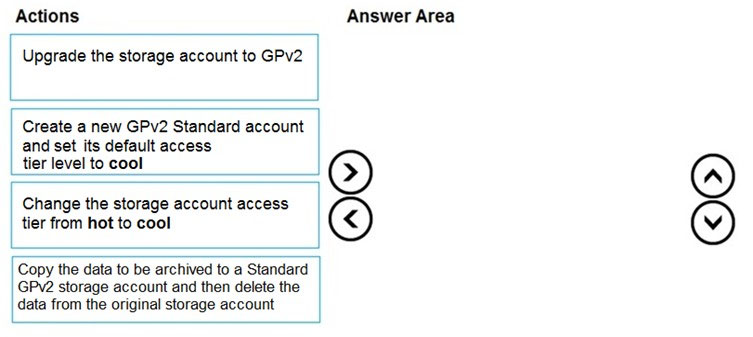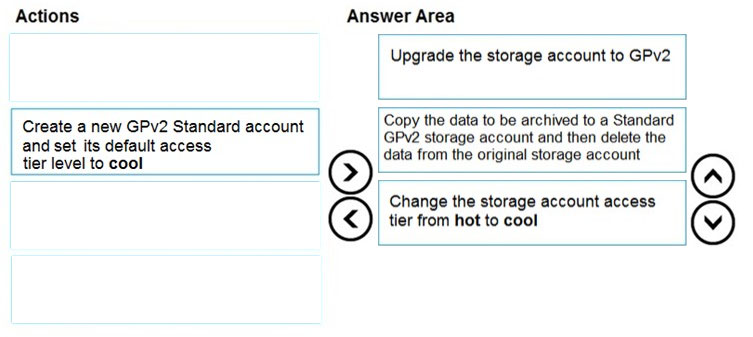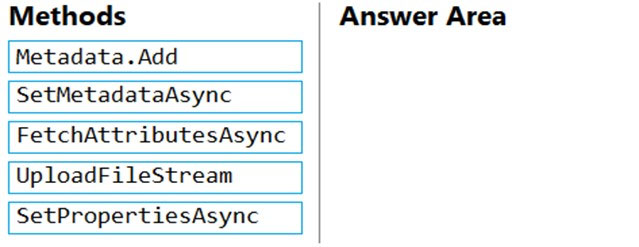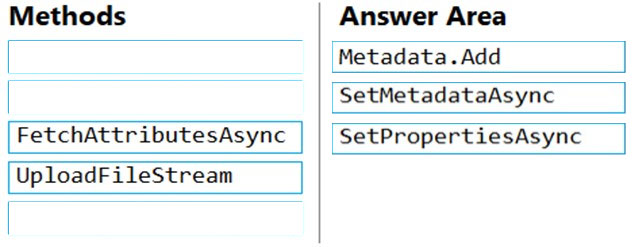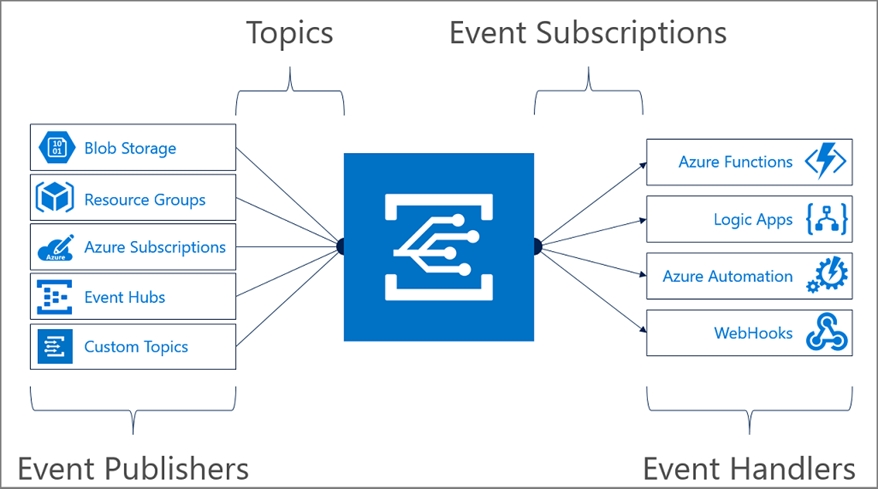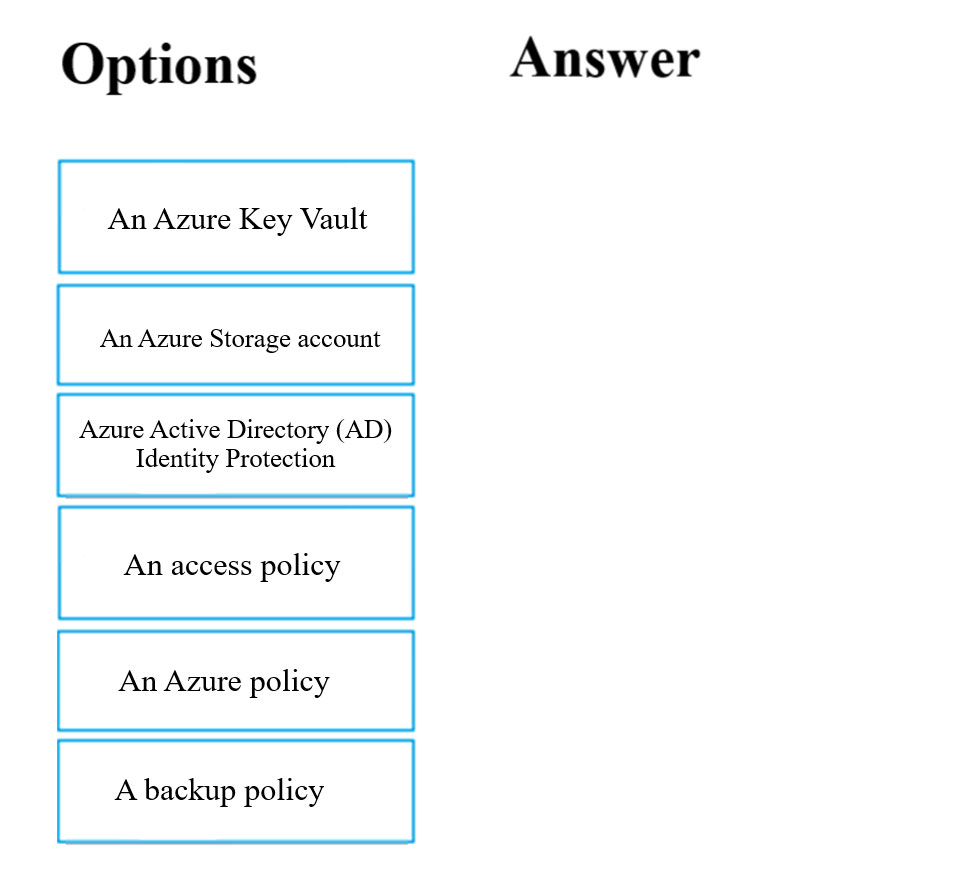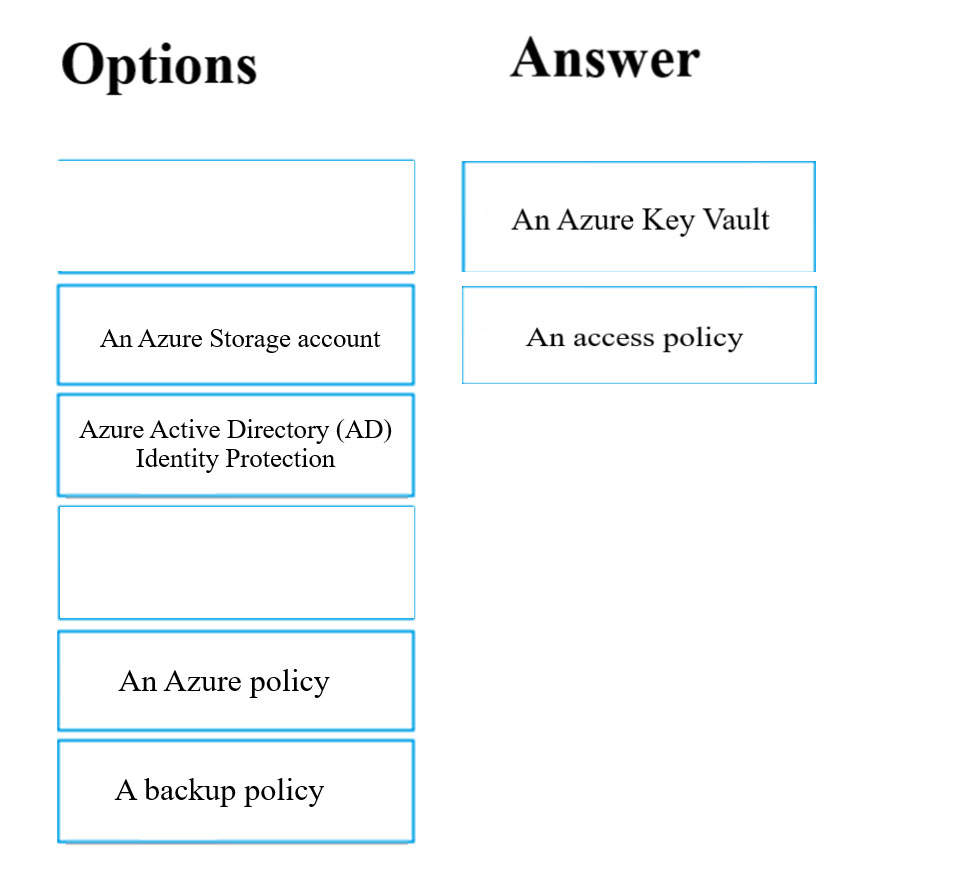AZ-204 Practice Exam Free – 50 Questions to Simulate the Real Exam
Are you getting ready for the AZ-204 certification? Take your preparation to the next level with our AZ-204 Practice Exam Free – a carefully designed set of 50 realistic exam-style questions to help you evaluate your knowledge and boost your confidence.
Using a AZ-204 practice exam free is one of the best ways to:
- Experience the format and difficulty of the real exam
- Identify your strengths and focus on weak areas
- Improve your test-taking speed and accuracy
Below, you will find 50 realistic AZ-204 practice exam free questions covering key exam topics. Each question reflects the structure and challenge of the actual exam.
You manage an Azure SQL database that allows for Azure AD authentication. You need to make sure that database developers can connect to the SQL database via Microsoft SQL Server Management Studio (SSMS). You also need to make sure the developers use their on-premises Active Directory account for authentication. Your strategy should allow for authentication prompts to be kept to a minimum. Which of the following should you implement?
A. Azure AD token.
B. Azure Multi-Factor authentication.
C. Active Directory integrated authentication.
D. OATH software tokens.
You are developing a road tollway tracking application that sends tracking events by using Azure Event Hubs using premium tier. Each road must have a throttling policy uniquely assigned. You need to configure the event hub to allow for per-road throttling. What should you do?
A. Use a unique consumer group for each road.
B. Ensure each road stores events in a different partition.
C. Ensure each road has a unique connection string.
D. Use a unique application group for each road.
HOTSPOT - You are developing a solution that uses the Azure Storage Client library for .NET. You have the following code: (Line numbers are included for reference only.)For each of the following statements, select Yes if the statement is true. Otherwise, select No. NOTE: Each correct selection is worth one point. Hot Area:
You develop and deploy an Azure App Service web app. The app is deployed to multiple regions and uses Azure Traffic Manager. Application Insights is enabled for the app. You need to analyze app uptime for each month. Which two solutions will achieve the goal? Each correct answer presents a complete solution. NOTE: Each correct selection is worth one point.
A. Azure Monitor logs
B. Application Insights alerts
C. Azure Monitor metrics
D. Application Insights web tests
Your company is developing an Azure API hosted in Azure. You need to implement authentication for the Azure API to access other Azure resources. You have the following requirements: ✑ All API calls must be authenticated. ✑ Callers to the API must not send credentials to the API. Which authentication mechanism should you use?
A. Basic
B. Anonymous
C. Managed identity
D. Client certificate
This question requires that you evaluate the underlined text to determine if it is correct. Your Azure Active Directory Azure (Azure AD) tenant has an Azure subscription linked to it. Your developer has created a mobile application that obtains Azure AD access tokens using the OAuth 2 implicit grant type. The mobile application must be registered in Azure AD. You require a redirect URI from the developer for registration purposes. Instructions: Review the underlined text. If it makes the statement correct, select `No change is needed.` If the statement is incorrect, select the answer choice that makes the statement correct.
A. No change required.
B. a secret
C. a login hint
D. a client ID
DRAG DROP - You develop an Azure solution that uses Cosmos DB. The current Cosmos DB container must be replicated and must use a partition key that is optimized for queries. You need to implement a change feed processor solution. Which change feed processor components should you use? To answer, drag the appropriate components to the correct requirements. Each component may be used once, more than once, or not at all. You may need to drag the split bar between panes or scroll to view the content. NOTE: Each correct selection is worth one point. Select and Place:
HOTSPOT - You are developing an application to store millions of images in Azure blob storage. The application has the following requirements: • Store the Exif (exchangeable image file format) data from the image as blob metadata when the application uploads the image. • Retrieve the Exif data from the image while minimizing bandwidth and processing time. • Utilizes the REST API. You need to use the image Exif data as blob metadata in the application. Which HTTP verbs should you use? To answer, select the appropriate options in the answer area. NOTE: Each correct selection is worth one point.
HOTSPOT - You have an App Service plan named asp1 based on the Free pricing tier. You plan to use asp1 to implement an Azure Function app with a queue trigger. Your solution must minimize cost. You need to identify the configuration options that will meet the requirements. Which value should you configure? To answer, select the appropriate options in the answer area. NOTE: Each correct selection is worth one point.
HOTSPOT - You are building a traffic monitoring system that monitors traffic along six highways. The system produces time series analysis-based reports for each highway. Data from traffic sensors are stored in Azure Event Hub. Traffic data is consumed by four departments. Each department has an Azure Web App that displays the time series-based reports and contains a WebJob that processes the incoming data from Event Hub. All Web Apps run on App Service Plans with three instances. Data throughput must be maximized. Latency must be minimized. You need to implement the Azure Event Hub. Which settings should you use? To answer, select the appropriate options in the answer area. NOTE: Each correct selection is worth one point. Hot Area:
DRAG DROP - Case study - This is a case study. Case studies are not timed separately. You can use as much exam time as you would like to complete each case. However, there may be additional case studies and sections on this exam. You must manage your time to ensure that you are able to complete all questions included on this exam in the time provided. To answer the questions included in a case study, you will need to reference information that is provided in the case study. Case studies might contain exhibits and other resources that provide more information about the scenario that is described in the case study. Each question is independent of the other questions in this case study. At the end of this case study, a review screen will appear. This screen allows you to review your answers and to make changes before you move to the next section of the exam. After you begin a new section, you cannot return to this section. To start the case study - To display the first question in this case study, click the Next button. Use the buttons in the left pane to explore the content of the case study before you answer the questions. Clicking these buttons displays information such as business requirements, existing environment, and problem statements. When you are ready to answer a question, click the Question button to return to the question. Background - Munson’s Pickles and Preserves Farm is an agricultural cooperative corporation based in Washington, US, with farms located across the United States. The company supports agricultural production resources by distributing seeds fertilizers, chemicals, fuel, and farm machinery to the farms. Current Environment - The company is migrating all applications from an on-premises datacenter to Microsoft Azure. Applications support distributors, farmers, and internal company staff. Corporate website - • The company hosts a public website located at http://www.munsonspicklesandpreservesfarm.com. The site supports farmers and distributors who request agricultural production resources. Farms - • The company created a new customer tenant in the Microsoft Entra admin center to support authentication and authorization for applications. Distributors - • Distributors integrate their applications with data that is accessible by using APIs hosted at http://www.munsonspicklesandpreservesfarm.com/api to receive and update resource data. Requirements - The application components must meet the following requirements: Corporate website - • The site must be migrated to Azure App Service. • Costs must be minimized when hosting in Azure. • Applications must automatically scale independent of the compute resources. • All code changes must be validated by internal staff before release to production. • File transfer speeds must improve, and webpage-load performance must increase. • All site settings must be centrally stored, secured without using secrets, and encrypted at rest and in transit. • A queue-based load leveling pattern must be implemented by using Azure Service Bus queues to support high volumes of website agricultural production resource requests. Farms - • Farmers must authenticate to applications by using Microsoft Entra ID. Distributors - • The company must track a custom telemetry value with each API call and monitor performance of all APIs. • API telemetry values must be charted to evaluate variations and trends for resource data. Internal staff - • App and API updates must be validated before release to production. • Staff must be able to select a link to direct them back to the production app when validating an app or API update. • Staff profile photos and email must be displayed on the website once they authenticate to applications by using their Microsoft Entra ID. Security - • All web communications must be secured by using TLS/HTTPS. • Web content must be restricted by country/region to support corporate compliance standards. • The principle of least privilege must be applied when providing any user rights or process access rights. • Managed identities for Azure resources must be used to authenticate services that support Microsoft Entra ID authentication. Issues - Corporate website - • Farmers report HTTP 503 errors at the same time as internal staff report that CPU and memory usage are high. • Distributors report HTTP 502 errors at the same time as internal staff report that average response times and networking traffic are high. • Internal staff report webpage load sizes are large and take a long time to load. • Developers receive authentication errors to Service Bus when they debug locally. Distributors - • Many API telemetry values are sent in a short period of time. Telemetry traffic, data costs, and storage costs must be reduced while preserving a statistically correct analysis of the data points sent by the APIs. You need to correct the internal staff issue with webpages. Which three actions should you perform in sequence? To answer, move the appropriate actions from the list of actions to the answer area and arrange them in the correct order.
DRAG DROP - You need to correct the corporate website error. Which four actions should you recommend be performed in sequence? To answer, move the appropriate actions from the list of actions to the answer area and arrange them in the correct order. Select and Place:
After you answer a question in this section, you will NOT be able to return to it. As a result, these questions will not appear in the review screen. You are developing an Azure solution to collect point-of-sale (POS) device data from 2,000 stores located throughout the world. A single device can produce 2 megabytes (MB) of data every 24 hours. Each store location has one to five devices that send data. You must store the device data in Azure Blob storage. Device data must be correlated based on a device identifier. Additional stores are expected to open in the future. You need to implement a solution to receive the device data. Solution: Provision an Azure Event Grid. Configure event filtering to evaluate the device identifier. Does the solution meet the goal?
A. Yes
B. No
An organization hosts web apps in Azure. The organization uses Azure Monitor. You discover that configuration changes were made to some of the web apps. You need to identify the configuration changes. Which Azure Monitor log should you review?
A. AppServiceAppLogs
B. AppServiceEnvironmentPlatformlogs
C. AppServiceConsoleLogs
D. AppServiceAuditLogs
HOTSPOT - You are developing an application to store and retrieve data in Azure Blob storage. The application will be hosted in an on-premises virtual machine (VM). The VM is connected to Azure by using a Site-to-Site VPN gateway connection. The application is secured by using Azure Active Directory (Azure AD) credentials. The application must be granted access to the Azure Blob storage account with a start time, expiry time, and read permissions. The Azure Blob storage account access must use the Azure AD credentials of the application to secure data access. Data access must be able to be revoked if the client application security is breached. You need to secure the application access to Azure Blob storage. Which security features should you use? To answer select the appropriate options in the answer area. NOTE: Each correct selection is worth one point. Hot Area:
After you answer a question in this section, you will NOT be able to return to it. As a result, these questions will not appear in the review screen. You develop a software as a service (SaaS) offering to manage photographs. Users upload photos to a web service which then stores the photos in Azure Storage Blob storage. The storage account type is General-purpose V2. When photos are uploaded, they must be processed to produce and save a mobile-friendly version of the image. The process to produce a mobile-friendly version of the image must start in less than one minute. You need to design the process that starts the photo processing. Solution: Trigger the photo processing from Blob storage events. Does the solution meet the goal?
A. Yes
B. No
HOTSPOT - Case study - This is a case study. Case studies are not timed separately. You can use as much exam time as you would like to complete each case. However, there may be additional case studies and sections on this exam. You must manage your time to ensure that you are able to complete all questions included on this exam in the time provided. To answer the questions included in a case study, you will need to reference information that is provided in the case study. Case studies might contain exhibits and other resources that provide more information about the scenario that is described in the case study. Each question is independent of the other questions in this case study. At the end of this case study, a review screen will appear. This screen allows you to review your answers and to make changes before you move to the next section of the exam. After you begin a new section, you cannot return to this section. To start the case study - To display the first question in this case study, click the Next button. Use the buttons in the left pane to explore the content of the case study before you answer the questions. Clicking these buttons displays information such as business requirements, existing environment, and problem statements. When you are ready to answer a question, click the Question button to return to the question. Background - Munson’s Pickles and Preserves Farm is an agricultural cooperative corporation based in Washington, US, with farms located across the United States. The company supports agricultural production resources by distributing seeds fertilizers, chemicals, fuel, and farm machinery to the farms. Current Environment - The company is migrating all applications from an on-premises datacenter to Microsoft Azure. Applications support distributors, farmers, and internal company staff. Corporate website - • The company hosts a public website located at http://www.munsonspicklesandpreservesfarm.com. The site supports farmers and distributors who request agricultural production resources. Farms - • The company created a new customer tenant in the Microsoft Entra admin center to support authentication and authorization for applications. Distributors - • Distributors integrate their applications with data that is accessible by using APIs hosted at http://www.munsonspicklesandpreservesfarm.com/api to receive and update resource data. Requirements - The application components must meet the following requirements: Corporate website - • The site must be migrated to Azure App Service. • Costs must be minimized when hosting in Azure. • Applications must automatically scale independent of the compute resources. • All code changes must be validated by internal staff before release to production. • File transfer speeds must improve, and webpage-load performance must increase. • All site settings must be centrally stored, secured without using secrets, and encrypted at rest and in transit. • A queue-based load leveling pattern must be implemented by using Azure Service Bus queues to support high volumes of website agricultural production resource requests. Farms - • Farmers must authenticate to applications by using Microsoft Entra ID. Distributors - • The company must track a custom telemetry value with each API call and monitor performance of all APIs. • API telemetry values must be charted to evaluate variations and trends for resource data. Internal staff - • App and API updates must be validated before release to production. • Staff must be able to select a link to direct them back to the production app when validating an app or API update. • Staff profile photos and email must be displayed on the website once they authenticate to applications by using their Microsoft Entra ID. Security - • All web communications must be secured by using TLS/HTTPS. • Web content must be restricted by country/region to support corporate compliance standards. • The principle of least privilege must be applied when providing any user rights or process access rights. • Managed identities for Azure resources must be used to authenticate services that support Microsoft Entra ID authentication. Issues - Corporate website - • Farmers report HTTP 503 errors at the same time as internal staff report that CPU and memory usage are high. • Distributors report HTTP 502 errors at the same time as internal staff report that average response times and networking traffic are high. • Internal staff report webpage load sizes are large and take a long time to load. • Developers receive authentication errors to Service Bus when they debug locally. Distributors - • Many API telemetry values are sent in a short period of time. Telemetry traffic, data costs, and storage costs must be reduced while preserving a statistically correct analysis of the data points sent by the APIs. You need to correct the errors for farmers and distributors. Which solution should you use? To answer, select the appropriate options in the answer area. NOTE: Each correct selection is worth one point.
Case study - This is a case study. Case studies are not timed separately. You can use as much exam time as you would like to complete each case. However, there may be additional case studies and sections on this exam. You must manage your time to ensure that you are able to complete all questions included on this exam in the time provided. To answer the questions included in a case study, you will need to reference information that is provided in the case study. Case studies might contain exhibits and other resources that provide more information about the scenario that is described in the case study. Each question is independent of the other questions in this case study. At the end of this case study, a review screen will appear. This screen allows you to review your answers and to make changes before you move to the next section of the exam. After you begin a new section, you cannot return to this section. To start the case study - To display the first question in this case study, click the Next button. Use the buttons in the left pane to explore the content of the case study before you answer the questions. Clicking these buttons displays information such as business requirements, existing environment, and problem statements. When you are ready to answer a question, click the Question button to return to the question. Background - Munson’s Pickles and Preserves Farm is an agricultural cooperative corporation based in Washington, US, with farms located across the United States. The company supports agricultural production resources by distributing seeds fertilizers, chemicals, fuel, and farm machinery to the farms. Current Environment - The company is migrating all applications from an on-premises datacenter to Microsoft Azure. Applications support distributors, farmers, and internal company staff. Corporate website - • The company hosts a public website located at http://www.munsonspicklesandpreservesfarm.com. The site supports farmers and distributors who request agricultural production resources. Farms - • The company created a new customer tenant in the Microsoft Entra admin center to support authentication and authorization for applications. Distributors - • Distributors integrate their applications with data that is accessible by using APIs hosted at http://www.munsonspicklesandpreservesfarm.com/api to receive and update resource data. Requirements - The application components must meet the following requirements: Corporate website - • The site must be migrated to Azure App Service. • Costs must be minimized when hosting in Azure. • Applications must automatically scale independent of the compute resources. • All code changes must be validated by internal staff before release to production. • File transfer speeds must improve, and webpage-load performance must increase. • All site settings must be centrally stored, secured without using secrets, and encrypted at rest and in transit. • A queue-based load leveling pattern must be implemented by using Azure Service Bus queues to support high volumes of website agricultural production resource requests. Farms - • Farmers must authenticate to applications by using Microsoft Entra ID. Distributors - • The company must track a custom telemetry value with each API call and monitor performance of all APIs. • API telemetry values must be charted to evaluate variations and trends for resource data. Internal staff - • App and API updates must be validated before release to production. • Staff must be able to select a link to direct them back to the production app when validating an app or API update. • Staff profile photos and email must be displayed on the website once they authenticate to applications by using their Microsoft Entra ID. Security - • All web communications must be secured by using TLS/HTTPS. • Web content must be restricted by country/region to support corporate compliance standards. • The principle of least privilege must be applied when providing any user rights or process access rights. • Managed identities for Azure resources must be used to authenticate services that support Microsoft Entra ID authentication. Issues - Corporate website - • Farmers report HTTP 503 errors at the same time as internal staff report that CPU and memory usage are high. • Distributors report HTTP 502 errors at the same time as internal staff report that average response times and networking traffic are high. • Internal staff report webpage load sizes are large and take a long time to load. • Developers receive authentication errors to Service Bus when they debug locally. Distributors - • Many API telemetry values are sent in a short period of time. Telemetry traffic, data costs, and storage costs must be reduced while preserving a statistically correct analysis of the data points sent by the APIs. You need to implement an aggregate of telemetry values for distributor API calls. Which Application Insights API method should you use?
A. TrackEvent
B. TrackDependency
C. TrackMetric
D. TrackException
E. TrackTrace
You are developing an inventory tracking solution. The solution includes an Azure Function app containing multiple functions triggered by Azure Cosmos DB. You plan to deploy the solution to multiple Azure regions. The solution must meet the following requirements: • Item results from Azure Cosmos DS must return the most recent committed version of an item. • Items written to Azure Cosmos DB must provide ordering guarantees. You need to configure the consistency level for the Azure Cosmos DB deployments. Which consistency level should you use?
A. consistent prefix
B. eventual
C. bounded staleness
D. strong
E. session
You are developing an Azure Function that calls external APIs by providing an access token for the API. The access token is stored in a secret named token in an Azure Key Vault named mykeyvault. You need to ensure the Azure Function can access to the token. Which value should you store in the Azure Function App configuration?
A. KeyVault:mykeyvault;Secret:token
B. App:Settings:Secret:mykeyvault:token
C. AZUREKVCONNSTR_ https://mykeyveult.vault.ezure.net/secrets/token/
D. @Microsoft.KeyVault(SecretUri=https://mykeyvault.vault.azure.net/secrets/token/)
You develop and deploy an Azure Logic app that calls an Azure Function app. The Azure Function app includes an OpenAPI (Swagger) definition and uses an Azure Blob storage account. All resources are secured by using Azure Active Directory (Azure AD). The Azure Logic app must securely access the Azure Blob storage account. Azure AD resources must remain if the Azure Logic app is deleted. You need to secure the Azure Logic app. What should you do?
A. Create a user-assigned managed identity and assign role-based access controls.
B. Create an Azure AD custom role and assign the role to the Azure Blob storage account.
C. Create an Azure Key Vault and issue a client certificate.
D. Create a system-assigned managed identity and issue a client certificate.
E. Create an Azure AD custom role and assign role-based access controls.
You develop a REST API. You implement a user delegation SAS token to communicate with Azure Blob storage. The token is compromised. You need to revoke the token. What are two possible ways to achieve this goal? Each correct answer presents a complete solution. NOTE: Each correct selection is worth one point.
A. Revoke the delegation key.
B. Delete the stored access policy.
C. Regenerate the account key.
D. Remove the role assignment for the security principle.
HOTSPOT - You are configuring a new development environment for a Java application. The environment requires a Virtual Machine Scale Set (VMSS), several storage accounts, and networking components. The VMSS must not be created until the storage accounts have been successfully created and an associated load balancer and virtual network is configured. How should you complete the Azure Resource Manager template? To answer, select the appropriate options in the answer area. NOTE: Each correct selection is worth one point. Hot Area:
After you answer a question in this section, you will NOT be able to return to it. As a result, these questions will not appear in the review screen. You are developing an Azure Service application that processes queue data when it receives a message from a mobile application. Messages may not be sent to the service consistently. You have the following requirements: ✑ Queue size must not grow larger than 80 gigabytes (GB). ✑ Use first-in-first-out (FIFO) ordering of messages. ✑ Minimize Azure costs. You need to implement the messaging solution. Solution: Use the .Net API to add a message to an Azure Service Bus Queue from the mobile application. Create an Azure Windows VM that is triggered from Azure Service Bus Queue. Does the solution meet the goal?
A. Yes
B. No
DRAG DROP - You are developing a new page for a website that uses Azure Cosmos DB for data storage. The feature uses documents that have the following format:You must display data for the new page in a specific order. You create the following query for the page:
You need to configure a Cosmos DB policy to support the query. How should you configure the policy? To answer, drag the appropriate JSON segments to the correct locations. Each JSON segment may be used once, more than once, or not at all. You may need to drag the split bar between panes or scroll to view content. NOTE: Each correct selection is worth one point. Select and Place:
HOTSPOT - An organization deploys a blob storage account. Users take multiple snapshots of the blob storage account over time. You need to delete all snapshots of the blob storage account. You must not delete the blob storage account itself. How should you complete the code segment? To answer, select the appropriate options in the answer area. NOTE: Each correct selection is worth one point. Hot Area:
You develop an ASP.NET Core app that uses Azure App Configuration. You also create an App Configuration containing 100 settings. The app must meet the following requirements: • Ensure the consistency of all configuration data when changes to individual settings occur. • Handle configuration data changes dynamically without causing the application to restart. • Reduce the overall number of requests made to App Configuration APIs. You must implement dynamic configuration updates in the app. What are two ways to achieve this goal? Each correct answer presents part of the solution. NOTE: Each correct selection is worth one point.
A. Create and register a sentinel key in the App Configuration store. Set the refreshAll parameter of the Register method to true.
B. Increase the App Configuration cache expiration from the default value.
C. Decrease the App Configuration cache expiration from the default value.
D. Create and configure Azure Key Vault. Implement the Azure Key Vault configuration provider.
E. Register all keys in the App Configuration store. Set the refreshAll parameter of the Register method to false.
F. Create and implement environment variables for each App Configuration store setting.
DRAG DROP - You are developing an application to store millions of images in Azure blob storage. The images are uploaded to an Azure blob storage container named companyimages contained in an Azure blob storage account named companymedia. The stored images are uploaded with multiple blob index tags across multiple blobs in the container. You must find all blobs whose tags match a search expression in the container. The search expression must evaluate an index tag named status with a value of final. You need to construct the GET method request URI. How should you complete the URI? To answer, drag the appropriate parameters to the correct request URI targets. Each parameter may be used once, more than once, or not at all. You may need to drag the split bar between panes or scroll to view content.
After you answer a question in this section, you will NOT be able to return to it. As a result, these questions will not appear in the review screen. You are implementing an application by using Azure Event Grid to push near-real-time information to customers. You have the following requirements: • You must send events to thousands of customers that include hundreds of various event types. • The events must be filtered by event type before processing. • Authentication and authorization must be handled by using Microsoft Entra ID. • The events must be published to a single endpoint. You need to implement Azure Event Grid. Solution: Publish events to a system topic. Create an event subscription for each customer. Does the solution meet the goal?
A. Yes
B. No
DRAG DROP - You develop and deploy a web app to Azure App Service in a production environment. You scale out the web app to four instances and configure a staging slot to support changes. You must monitor the web app in the environment to include the following requirements: ✑ Increase web app availability by re-routing requests away from instances with error status codes and automatically replace instances if they remain in an error state after one hour. ✑ Send web server logs, application logs, standard output, and standard error messaging to an Azure Storage blob account. You need to configure Azure App Service. Which values should you use? To answer, drag the appropriate configuration value to the correct requirements. Each configuration value may be used once, more than once, or not at all. You may need to drag the split bar between panes or scroll to view content. NOTE: Each correct selection is worth one point. Select and Place:
You need to ensure that the solution can meet the scaling requirements for Policy Service. Which Azure Application Insights data model should you use?
A. an Application Insights dependency
B. an Application Insights event
C. an Application Insights trace
D. an Application Insights metric
You provide an Azure API Management managed web service to clients. The back-end web service implements HTTP Strict Transport Security (HSTS). Every request to the backend service must include a valid HTTP authorization header. You need to configure the Azure API Management instance with an authentication policy. Which two policies can you use? Each correct answer presents a complete solution. NOTE: Each correct selection is worth one point.
A. Basic Authentication
B. Digest Authentication
C. Certificate Authentication
D. OAuth Client Credential Grant
You need to monitor ContentUploadService according to the requirements. Which command should you use?
A. az monitor metrics alert create ג€”n alert ג€”g ג€¦ – -scopes ג€¦ – -condition “avg Percentage CPU > 8”
B. az monitor metrics alert create ג€”n alert ג€”g ג€¦ – -scopes ג€¦ – -condition “avg Percentage CPU > 800”
C. az monitor metrics alert create ג€”n alert ג€”g ג€¦ – -scopes ג€¦ – -condition “CPU Usage > 800”
D. az monitor metrics alert create ג€”n alert ג€”g ג€¦ – -scopes ג€¦ – -condition “CPU Usage > 8”
HOTSPOT - You plan to develop an Azure Functions app with an Azure Blob Storage trigger. The app will be used infrequently, with a limited duration of individual executions. The app must meet the following requirements: • Event-driven scaling • Support for deployment slots • Minimize costs You need to identify the hosting plan and the maximum duration when executing the app. Which configuration setting values should you use? To answer, select the appropriate values in the answer area. NOTE: Each correct selection is worth one point.
After you answer a question in this section, you will NOT be able to return to it. As a result, these questions will not appear in the review screen. You develop a software as a service (SaaS) offering to manage photographs. Users upload photos to a web service which then stores the photos in Azure Storage Blob storage. The storage account type is General-purpose V2. When photos are uploaded, they must be processed to produce and save a mobile-friendly version of the image. The process to produce a mobile-friendly version of the image must start in less than one minute. You need to design the process that starts the photo processing. Solution: Convert the Azure Storage account to a BlockBlobStorage storage account. Does the solution meet the goal?
A. Yes
B. No
HOTSPOT - You have an Azure Active Directory (Azure AD) tenant. You want to implement multi-factor authentication by making use of a conditional access policy. The conditional access policy must be applied to all users when they access the Azure portal. Which three settings should you configure? To answer, select the appropriate settings in the answer area. NOTE: Each correct selection is worth one point. Hot Area:
You develop a web application that sells access to last-minute openings for child camps that run on the weekends. The application uses Azure Application Insights for all alerting and monitoring. The application must alert operators when a technical issue is preventing sales to camps. You need to build an alert to detect technical issues. Which alert type should you use?
A. Metric alert using multiple time series
B. Metric alert using dynamic thresholds
C. Log alert using multiple time series
D. Log alert using dynamic thresholds
After you answer a question in this section, you will NOT be able to return to it. As a result, these questions will not appear in the review screen. You are developing an Azure solution to collect point-of-sale (POS) device data from 2,000 stores located throughout the world. A single device can produce 2 megabytes (MB) of data every 24 hours. Each store location has one to five devices that send data. You must store the device data in Azure Blob storage. Device data must be correlated based on a device identifier. Additional stores are expected to open in the future. You need to implement a solution to receive the device data. Solution: Provision an Azure Notification Hub. Register all devices with the hub. Does the solution meet the goal?
A. Yes
B. No
DRAG DROP - You are maintaining an existing application that uses an Azure Blob GPv1 Premium storage account. Data older than three months is rarely used. Data newer than three months must be available immediately. Data older than a year must be saved but does not need to be available immediately. You need to configure the account to support a lifecycle management rule that moves blob data to archive storage for data not modified in the last year. Which three actions should you perform in sequence? To answer, move the appropriate actions from the list of actions to the answer area and arrange them in the correct order. Select and Place:
You need to ensure that all messages from Azure Event Grid are processed. What should you use?
A. Azure Event Grid topic
B. Azure Service Bus topic
C. Azure Service Bus queue
D. Azure Storage queue
E. Azure Logic App custom connector
You are developing several Azure API Management (APIM) hosted APIs. You must make several minor and non-breaking changes to one of the APIs. The API changes include the following requirements: • Must not disrupt callers of the API. • Enable roll back if you find issues. • Documented to enable developers to understand what is new. • Tested before publishing. You need to update the API. What should you do?
A. Configure and apply header-based versioning.
B. Create and publish a product.
C. Configure and apply a custom policy.
D. Add a new revision to the API.
E. Configure and apply query string-based versioning.
DRAG DROP - You have an application that uses Azure Blob storage. You need to update the metadata of the blobs. Which three methods should you use to develop the solution? To answer, move the appropriate methods from the list of methods to the answer area and arrange them in the correct order. Select and Place:
A company is developing a solution that allows smart refrigerators to send temperature information to a central location. The solution must receive and store messages until they can be processed. You create an Azure Service Bus instance by providing a name, pricing tier, subscription, resource group, and location. You need to complete the configuration. Which Azure CLI or PowerShell command should you run?
A.

B.

C.

D.

DRAG DROP - You are developing an Azure solution to collect inventory data from thousands of stores located around the world. Each store location will send the inventory data hourly to an Azure Blob storage account for processing. The solution must meet the following requirements: ✑ Begin processing when data is saved to Azure Blob storage. ✑ Filter data based on store location information. ✑ Trigger an Azure Logic App to process the data for output to Azure Cosmos DB. ✑ Enable high availability and geographic distribution. ✑ Allow 24-hours for retries. ✑ Implement an exponential back off data processing. You need to configure the solution. What should you implement? To answer, select the appropriate options in the answer area. NOTE: Each correct selection is worth one point. Select and Place:
After you answer a question in this section, you will NOT be able to return to it. As a result, these questions will not appear in the review screen. You deploy an Azure Container Apps app and disable ingress on the container app. Users report that they are unable to access the container app. You investigate and observe that the app has scaled to 0 instances. You need to resolve the issue with the container app. Solution: Enable ingress, create a custom scale rule, and apply the rule to the container app. Does the solution meet the goal?
A. Yes
B. No
HOTSPOT - You plan to implement an Azure Functions app. The Azure Functions app has the following requirements: • Must be triggered by a message placed in an Azure Storage queue. • Must use the queue name set by an app setting named input_queue. • Must create an Azure Blob Storage named the same as the content of the message. You need to identify how to reference the queue and blob name in the function.json file of the Azure Functions app. How should you reference the names? To answer, select the appropriate values in the answer area. NOTE: Each correct selection is worth one point.
A company maintains multiple web and mobile applications. Each application uses custom in-house identity providers as well as social identity providers. You need to implement single sign-on (SSO) for all the applications. What should you do?
A. Use Azure Active Directory B2C (Azure AD B2C) with custom policies.
B. Use Azure Active Directory B2B (Azure AD B2B) and enable external collaboration.
C. Use Azure Active Directory B2C (Azure AD B2C) with user flows.
D. Use Azure Active Directory B2B (Azure AD B2B).
HOTSPOT - You provisioned an Azure Cosmos DB for NoSQL account named account1 with the default consistency level. You plan to configure the consistency level on a per request basis. The level needs to be set for consistent prefix for read and write operations to account1. You need to identify the resulting consistency level for read and write operations. Which levels should you configure? To answer, select the appropriate options in the answer area. NOTE: Each correct selection is worth one point.
DRAG DROP - You need to ensure that PolicyLib requirements are met. How should you complete the code segment? To answer, drag the appropriate code segments to the correct locations. Each code segment may be used once, more than once, or not at all. You may need to drag the split bar between panes or scroll to view content. NOTE: Each correct selection is worth one point. Select and Place:
DRAG DROP - You have downloaded an Azure Resource Manager template to deploy numerous virtual machines. The template is based on a current virtual machine, but must be adapted to reference an administrative password. You need to make sure that the password is not stored in plain text. You are preparing to create the necessary components to achieve your goal. Which of the following should you create to achieve your goal? Answer by dragging the correct option from the list to the answer area. Select and Place:
Free Access Full AZ-204 Practice Exam Free
Looking for additional practice? Click here to access a full set of AZ-204 practice exam free questions and continue building your skills across all exam domains.
Our question sets are updated regularly to ensure they stay aligned with the latest exam objectives—so be sure to visit often!
Good luck with your AZ-204 certification journey!


